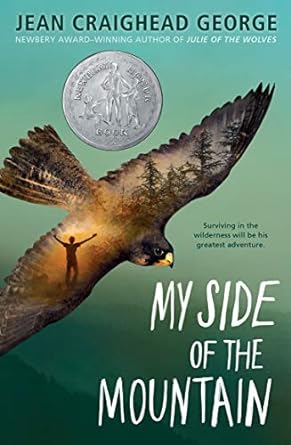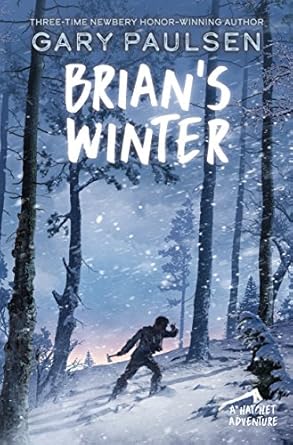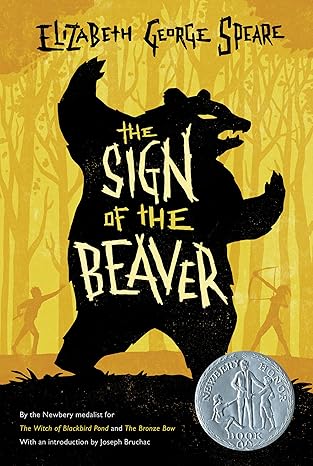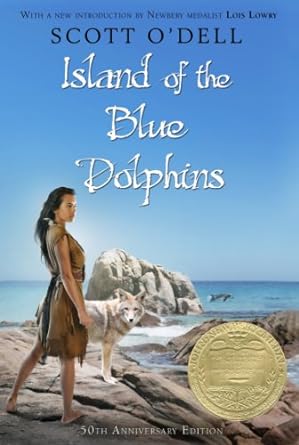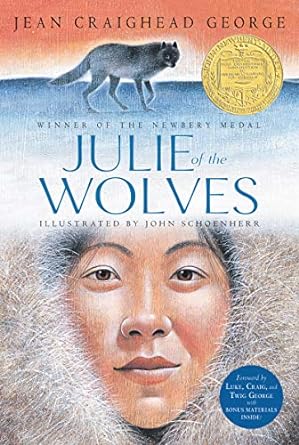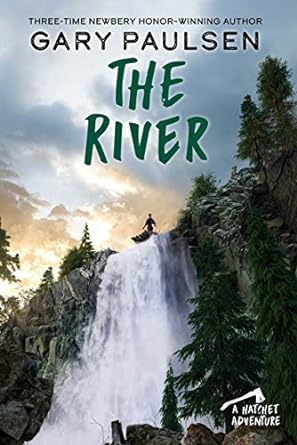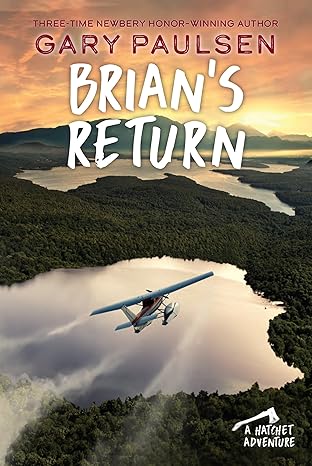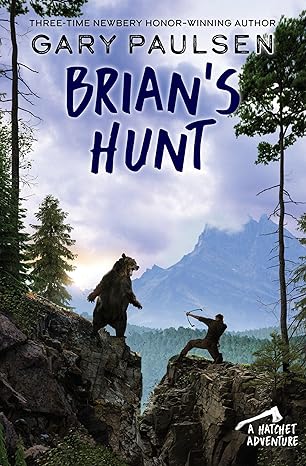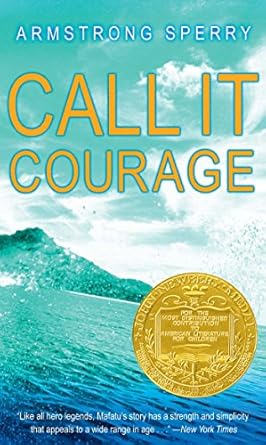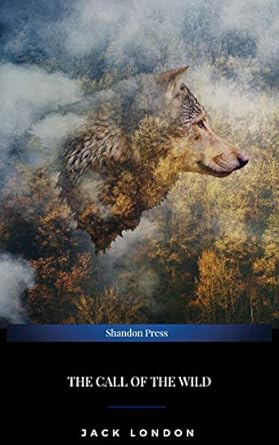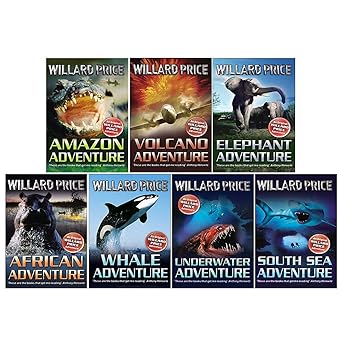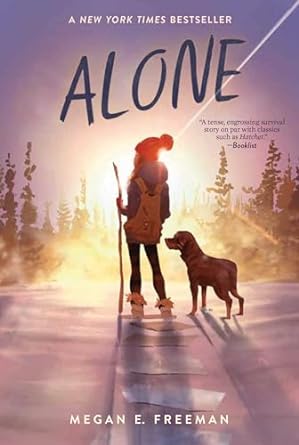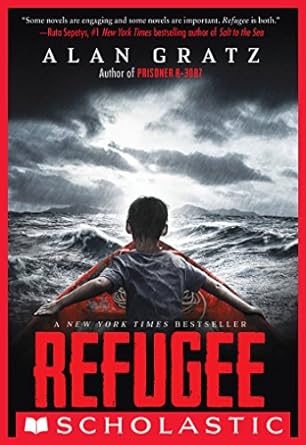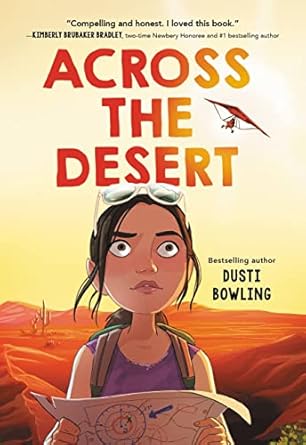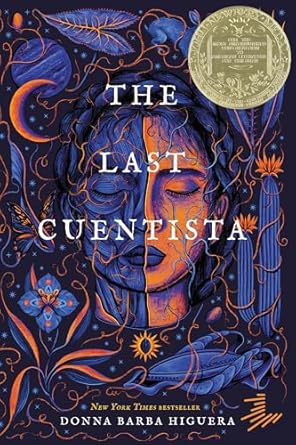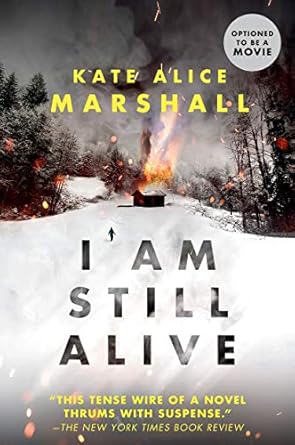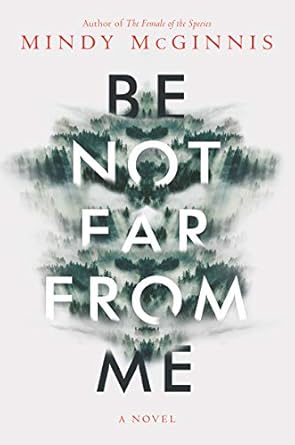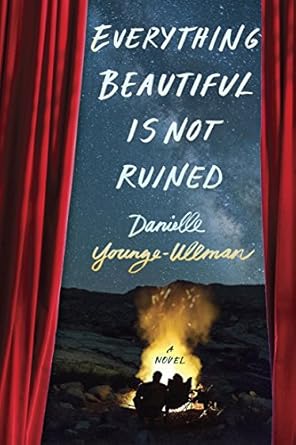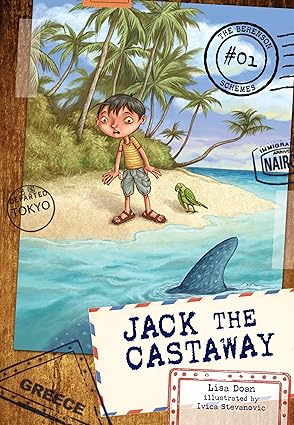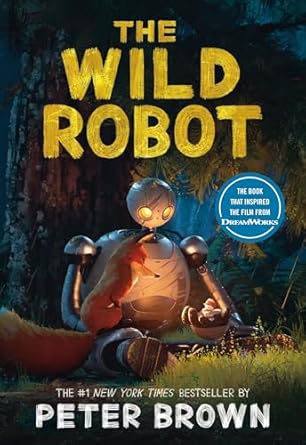Summary: In today's article, I have selected 20 of the best books similar to Hatchet that will keep you on the edge of your seat with exciting survival stories. Here are my top 3 picks:
- My Side of the Mountain by Jean Craighead George
- Brian's Winter by Gary Paulsen
- The Sign of the Beaver by Elizabeth George Speare
If you loved Hatchet, these books offer thrilling survival stories filled with resilience, self-reliance, and the power of nature. From My Side of the Mountain to The Sign of the Beaver, each adventure tests its characters in harsh environments, forcing them to rely on instincts and courage. Perfect for readers who enjoy fast-paced, realistic tales of survival and self-discovery.
TOP 20: Best Books Similar to Hatchet
- My Side of the Mountain by Jean Craighead George
- Brian's Winter by Gary Paulsen
- The Sign of the Beaver by Elizabeth George Speare
- Island of the Blue Dolphins by Scott O'Dell
- Julie of the Wolves by Jean Craighead George
- The River by Gary Paulsen
- Brian’s Return by Gary Paulsen
- Brian’s Hunt by Gary Paulsen
- Call It Courage by Armstrong Sperry
- The Call of the Wild by Jack London
- Amazon Adventure by Willard Price
- Alone by Megan E. Freeman
- Refugee by Alan Gratz
- Across the Desert by Dusti Bowling
- The Last Cuentista by Donna Barba Higuera
- I Am Still Alive by Kate Alice Marshall
- Be Not Far from Me by Mindy McGinnis
- Everything Beautiful Is Not Ruined by Danielle Younge-Ullman
- Jack the Castaway by Lisa Doan
- The Wild Robot by Peter Brown
1. My Side of the Mountain
- Author: Jean Craighead George
- About: Young Sam Gribley leaves his New York City home to live in the Catskill Mountains, surviving with his wits and a falcon named Frightful.
- Style of Writing: Descriptive and immersive, with a focus on nature and survival details.
- Length: Approximately 40,000 words.
- Year Written: 1959
- Emotional Impact: Inspiring and thought-provoking, highlighting themes of independence and self-discovery.
- Difficulty Level: Moderate; suitable for middle-grade readers and above.
- Why Read It: Offers a compelling tale of adventure and the human connection to nature.
2. Brian's Winter
- Author: Gary Paulsen
- About: An alternate sequel to “Hatchet,” exploring how Brian would have survived the winter in the wilderness.
- Style of Writing: Straightforward and engaging, with detailed survival scenarios.
- Length: Approximately 40,000 words.
- Year Written: 1996
- Emotional Impact: Tense and immersive, emphasizing resilience and adaptability.
- Difficulty Level: Moderate; accessible to young adults and adults.
- Why Read It: Provides a deeper exploration of survival challenges in harsh conditions.
3. The Sign of the Beaver
- Author: Elizabeth George Speare
- About: Left alone to guard his family's cabin, young Matt befriends Attean, a Native American boy who teaches him survival skills.
- Style of Writing: Narrative-driven with rich cultural insights and character development.
- Length: Approximately 50,000 words.
- Year Written: 1983
- Emotional Impact: Heartwarming and educational, focusing on friendship and cultural exchange.
- Difficulty Level: Moderate; suitable for middle-grade readers and above.
- Why Read It: Highlights the importance of cross-cultural understanding and cooperation.
4. Island of the Blue Dolphins
- Author: Scott O'Dell
- About: Based on a true story, a young girl named Karana survives alone on an isolated island for years.
- Style of Writing: Poetic and descriptive, capturing the beauty and challenges of isolation.
- Length: Approximately 40,000 words.
- Year Written: 1960
- Emotional Impact: Poignant and introspective, exploring themes of solitude and resilience.
- Difficulty Level: Moderate; accessible to a wide range of readers.
- Why Read It: Offers a profound look at human endurance and the will to survive.
5. Julie of the Wolves
- Author: Jean Craighead George
- About: Miyax, a young Eskimo girl, becomes lost in the Alaskan tundra and survives by befriending a wolf pack.
- Style of Writing: Lyrical and evocative, blending cultural insights with survival narrative.
- Length: Approximately 35,000 words.
- Year Written: 1972
- Emotional Impact: Moving and enlightening, highlighting the bond between humans and animals.
- Difficulty Level: Moderate; suitable for middle-grade readers and above.
- Why Read It: Provides a unique perspective on survival and the interconnectedness of life.
6. The River
- Author: Gary Paulsen
- About: Brian returns to the wilderness to teach survival techniques, but an unexpected crisis tests his skills anew.
- Style of Writing: Direct and suspenseful, with detailed depictions of survival strategies.
- Length: Approximately 30,000 words.
- Year Written: 1991
- Emotional Impact: Intense and gripping, emphasizing quick thinking and perseverance.
- Difficulty Level: Moderate; accessible to young adults and adults.
- Why Read It: Continues Brian's adventure, delving deeper into survival psychology.
7. Brian’s Return
- Author: Gary Paulsen
- About: After his initial wilderness survival experience, Brian Robeson struggles to reintegrate into society and decides to return to the wild, where he feels truly at home.
- Style of Writing: Reflective and descriptive, focusing on Brian's internal conflict and his connection to nature.
- Length: Approximately 128 pages.
- Year Written: 1999
- Emotional Impact: Thought-provoking, exploring themes of belonging and self-discovery.
- Difficulty Level: Moderate; suitable for young adults and above.
- Why Read It: Offers insight into the challenges of balancing societal expectations with personal fulfillment in nature.
8. Brian's Hunt
- Author: Gary Paulsen
- About: Brian, now 16, returns to the Canadian wilderness and encounters a wounded dog, leading him to a dangerous predator and a deeper understanding of life in the wild.
- Style of Writing: Suspenseful and vivid, with detailed depictions of wilderness survival and animal behavior.
- Length: Approximately 182 pages.
- Year Written: 2003
- Emotional Impact: Intense and gripping, highlighting the harsh realities of nature.
- Difficulty Level: Moderate; accessible to young adults and adults.
- Why Read It: Provides a thrilling conclusion to Brian's saga, emphasizing the bond between humans and animals.
9. Call It Courage
- Author: Armstrong Sperry
- About: Mafatu, a young Polynesian boy afraid of the sea, embarks on a solo journey to conquer his fears and prove his courage.
- Style of Writing: Simple yet evocative, with a focus on personal growth and cultural elements.
- Length: Approximately 116 pages.
- Year Written: 1940
- Emotional Impact: Inspiring and uplifting, celebrating bravery and self-discovery.
- Difficulty Level: Easy to moderate; suitable for middle-grade readers and above.
- Why Read It: A timeless tale of overcoming fear and embracing one's identity.
10. The Call of the Wild
- Author: Jack London
- About: Buck, a domesticated dog, is thrust into the harsh Yukon wilderness during the Klondike Gold Rush, where he reverts to his primal instincts to survive.
- Style of Writing: Rich and descriptive, exploring themes of nature versus nurture and survival of the fittest.
- Length: Approximately 232 pages.
- Year Written: 1903
- Emotional Impact: Profound and moving, delving into the intrinsic call of the wild within all creatures.
- Difficulty Level: Moderate; suitable for young adults and adults.
- Why Read It: A classic exploration of the transformative power of nature and the instinctual drive for survival.
11. Amazon Adventure
- Author: Willard Price
- About: Teenagers Hal and Roger Hunt embark on an expedition to the Amazon to capture exotic animals, facing numerous dangers and challenges along the way.
- Style of Writing: Action-packed and informative, with detailed descriptions of wildlife and adventure.
- Length: Approximately 288 pages.
- Year Written: 1949
- Emotional Impact: Exciting and educational, fostering a sense of adventure and appreciation for biodiversity.
- Difficulty Level: Moderate; suitable for young adults and above.
- Why Read It: Combines thrilling adventure with educational insights into the natural world.
12. Alone
- Author: Megan E. Freeman
- About: Twelve-year-old Maddie wakes up to find herself alone in her town after a mass evacuation and must learn to survive on her own.
- Style of Writing: Written in verse, providing a lyrical and poignant narrative.
- Length: Approximately 416 pages.
- Year Written: 2021
- Emotional Impact: Deeply moving, exploring themes of isolation, resilience, and self-reliance.
- Difficulty Level: Moderate; suitable for middle-grade readers and above.
- Why Read It: Offers a unique narrative style that delves into the emotional journey of surviving alone.
13. Refugee
- Author: Alan Gratz
- About: This novel intertwines the stories of three young refugees: Josef, a Jewish boy fleeing Nazi Germany; Isabel, a Cuban girl escaping Castro's regime in 1994; and Mahmoud, a Syrian boy seeking safety from the ongoing conflict in 2015.
- Style of Writing: Fast-paced and emotionally engaging, with alternating narratives that highlight each character's journey.
- Length: Approximately 352 pages.
- Year Written: 2017
- Emotional Impact: Profound and heart-wrenching, offering a deep understanding of the refugee experience.
- Difficulty Level: Moderate; suitable for middle-grade readers and above.
- Why Read It: Provides a compelling look at historical and contemporary refugee crises through the eyes of young protagonists.
14. Across the Desert
- Author: Dusti Bowling
- About: Twelve-year-old Jolene witnesses her friend Addie crash during a live-streamed ultralight flight. Determined to help, Jolene embarks on a perilous journey across the Arizona desert to find and rescue her.
- Style of Writing: Suspenseful and heartfelt, with vivid descriptions of the desert landscape and the challenges it presents.
- Length: Approximately 320 pages.
- Year Written: 2021
- Emotional Impact: Inspiring and tense, highlighting themes of friendship, courage, and perseverance.
- Difficulty Level: Moderate; suitable for middle-grade readers and above.
- Why Read It: Offers a gripping adventure that showcases the strength of determination and the bonds of friendship.
15. The Last Cuentista
- Author: Donna Barba Higuera
- About: After Earth is destroyed by a comet, Petra Peña and her family are among those chosen to journey to a new planet. Upon awakening from a centuries-long sleep, Petra discovers she's the only one who remembers Earth and must use her storytelling to keep its history alive.
- Style of Writing: Lyrical and imaginative, blending science fiction with rich cultural storytelling.
- Length: Approximately 336 pages.
- Year Written: 2021
- Emotional Impact: Poignant and thought-provoking, emphasizing the importance of memory and storytelling.
- Difficulty Level: Moderate; suitable for middle-grade readers and above.
- Why Read It: Explores themes of cultural preservation and the power of stories in shaping identity.
16. I Am Still Alive
- Author: Kate Alice Marshall
- About: After a devastating car accident that kills her mother, Jess is sent to live with her estranged father in the Canadian wilderness. When her father is murdered, Jess must survive alone in the wild, seeking both survival and revenge.
- Style of Writing: Gritty and suspenseful, with a focus on survival tactics and emotional resilience.
- Length: Approximately 336 pages.
- Year Written: 2018
- Emotional Impact: Intense and gripping, highlighting themes of loss, survival, and determination.
- Difficulty Level: Moderate; suitable for young adults and above.
- Why Read It: Provides a thrilling survival story with a strong, resourceful protagonist.
17. Be Not Far from Me
- Author: Mindy McGinnis
- About: Ashley Hawkins prides herself on her wilderness skills, but after getting lost during a party in the Smoky Mountains, she faces injuries and the harsh realities of survival, testing her limits and will to live.
- Style of Writing: Raw and realistic, with detailed depictions of survival challenges and inner turmoil.
- Length: Approximately 240 pages.
- Year Written: 2020
- Emotional Impact: Harrowing and intense, exploring the thin line between life and death in the wild.
- Difficulty Level: Moderate; suitable for young adults and above.
- Why Read It: Delivers a compelling narrative about human endurance and the will to survive against all odds.
18. Everything Beautiful Is Not Ruined
- Author: Danielle Younge-Ullman
- About: Ingrid embarks on a challenging wilderness program for at-risk teens, confronting physical and emotional obstacles that force her to face her past and redefine her future.
- Style of Writing: Reflective and evocative, blending past and present narratives to reveal character depth.
- Length: Approximately 368 pages.
- Year Written: 2017
- Emotional Impact: Deeply moving and introspective, addressing themes of healing, resilience, and self-acceptance.
- Difficulty Level: Moderate; suitable for young adults and above.
- Why Read It: Offers a profound exploration of personal growth through adversity and the transformative power of nature.
19. Jack the Castaway
- Author: Lisa Doan
- About: Eleven-year-old Jack's adventurous but impractical parents take him to the Caribbean for a new business venture. During a snorkeling trip, Jack becomes stranded alone on a deserted island and must learn to survive until he is rescued.
- Style of Writing: Humorous and lighthearted, with engaging narrative and dialogue.
- Length: Approximately 160 pages.
- Year Written: 2014
- Emotional Impact: Entertaining and amusing, offering a playful take on survival themes.
- Difficulty Level: Easy; suitable for middle-grade readers.
- Why Read It: Provides a fun and adventurous story that combines humor with the challenges of self-reliance.
20. The Wild Robot
- Author: Peter Brown
- About: Roz, a robot, becomes stranded on a remote island after a shipwreck. Initially perceived as a monster by the island's animals, she learns to adapt to her environment, communicates with the wildlife, and even becomes a caretaker to an orphaned gosling.
- Style of Writing: Simple yet evocative, blending narrative storytelling with illustrations.
- Length: Approximately 288 pages.
- Year Written: 2016
- Emotional Impact: Heartwarming and thought-provoking, exploring themes of identity, community, and coexistence.
- Difficulty Level: Moderate; suitable for middle-grade readers and above.
- Why Read It: Offers a unique perspective on survival and adaptation, highlighting the intersection of technology and nature.
Conclusion
If you loved Hatchet, I think you’ll really enjoy these books that take survival adventures to the next level. My Side of the Mountain follows a boy who chooses to live off the land, Brian’s Winter explores what might have happened if Brian had to endure the brutal cold, and The Sign of the Beaver highlights the power of friendship and learning from others in the wild. Each of these stories, along with the rest on this list, captures the challenges of survival, self-reliance, and the deep connection between people and nature. Personally, I find these kinds of books so immersive—they make you feel like you're right there, facing the elements. Whether you're looking for intense action or inspiring tales of resilience, these books are sure to leave a lasting impression.

